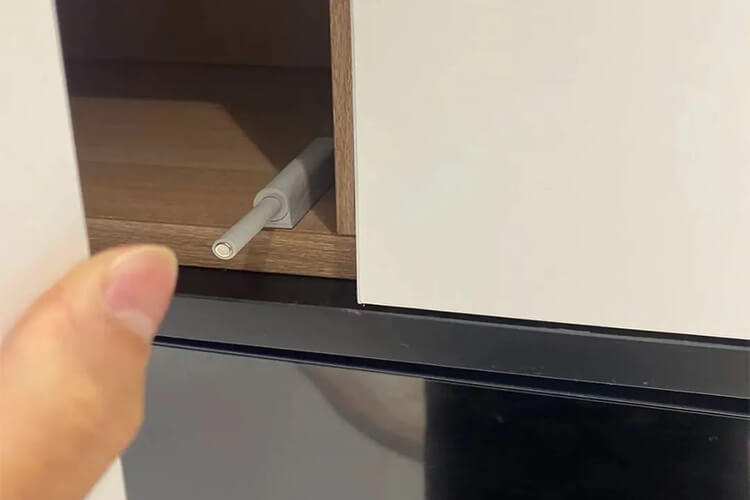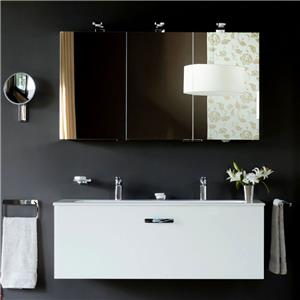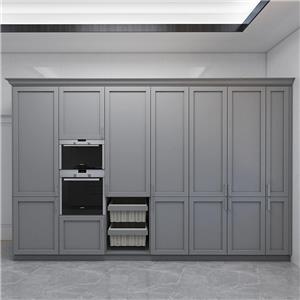6 tipos de diseño moderno sin manijas
6 Types of Trendy Handleless Design
When it comes to customizing home furnishings, in addition to considering the style and interior layout, we must not overlook the details of cabinet door handles, as they can significantly impact the overall aesthetic appeal. Let's discuss some design options for handleless cabinets.
Inclined Cut Handles
Inclined cut handles involve cutting the cabinet door edges at a 45° angle, creating a gap of at least 2cm. Simply inserting your hand into the gap allows for easy door opening. This design method is typically suitable for lower cabinets and shoe cabinets, which have relatively shorter doors.
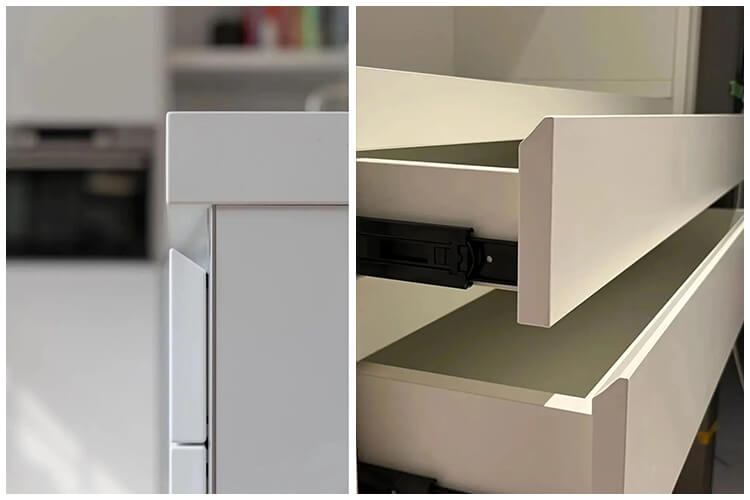
However, inclined cut handles require higher precision. They necessitate machine cutting on double-faced door panels with a thickness of 18mm or more to form a 45° angle within the panel, followed by machine edging.
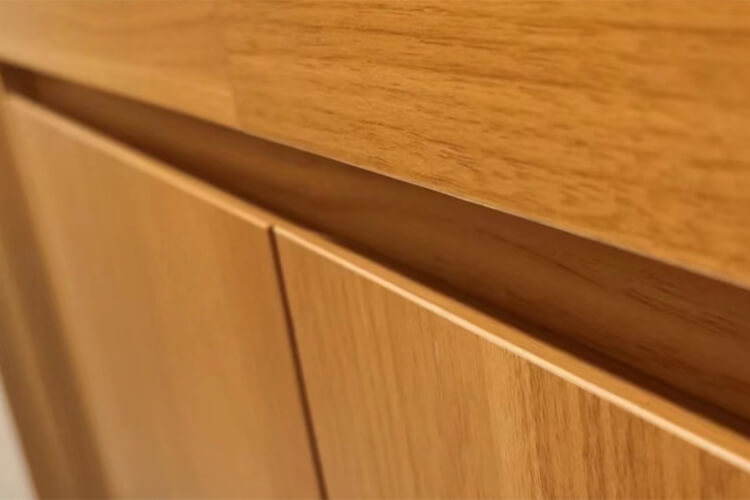
Underhung Panel Handles
Underhung panel handles extend approximately one centimeter below the cabinet door, allowing for effortless door opening with a gentle pull.
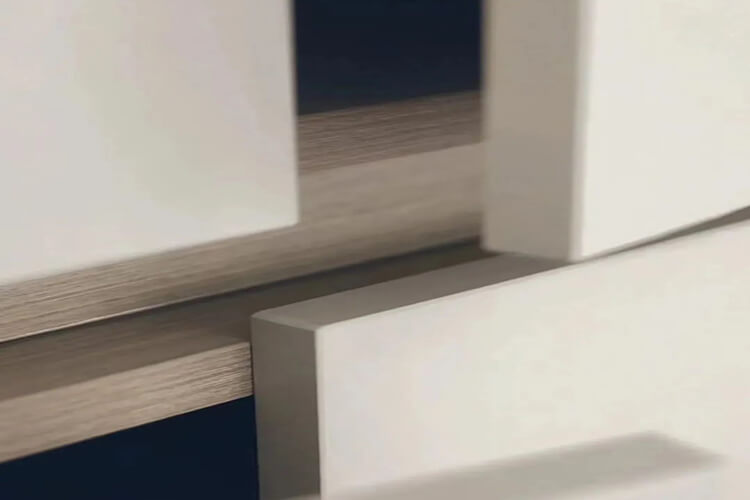
This handle design is commonly used for wall-mounted cabinets or floating cabinets, especially in cases where the cabinets are taller, making this method particularly convenient.
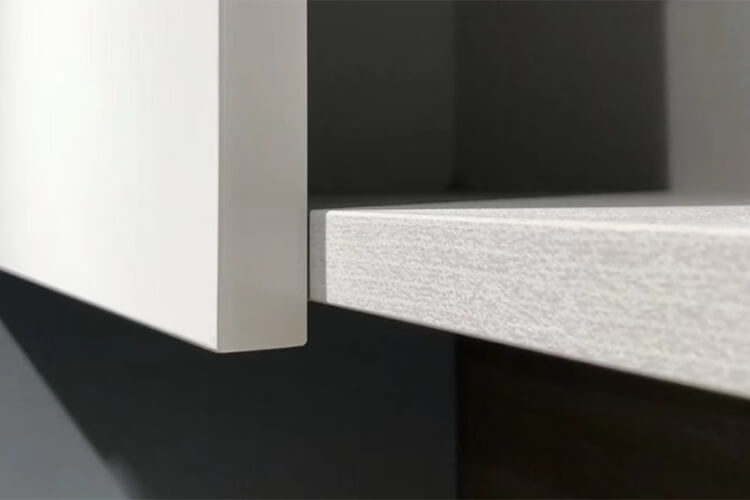
Straight Gap Handles
Straight gap handles involve creating a U-shaped gap on the cabinet body using panel components. This design allows for a clean and unified appearance in a single color or with contrasting colors. It is a relatively error-free and cost-effective approach.

This handleless design method is well-suited for cabinets with multiple layers. It is recommended to leave a gap of around 3.5cm, ensuring smoother functionality.
Groove Handles
Groove handles, also known as milling handles, entail milling a concealed groove on the side of the cabinet door. This style offers a variety of shapes and is suitable for painted doors and molded doors. Currently, it is a popular choice for handleless designs. However, groove handles are not suitable for particle boards as they cannot undergo secondary processing. Additionally, they may not be suitable for kitchen cabinets due to the challenge of cleaning the recessed area in kitchens with heavy oil fumes.
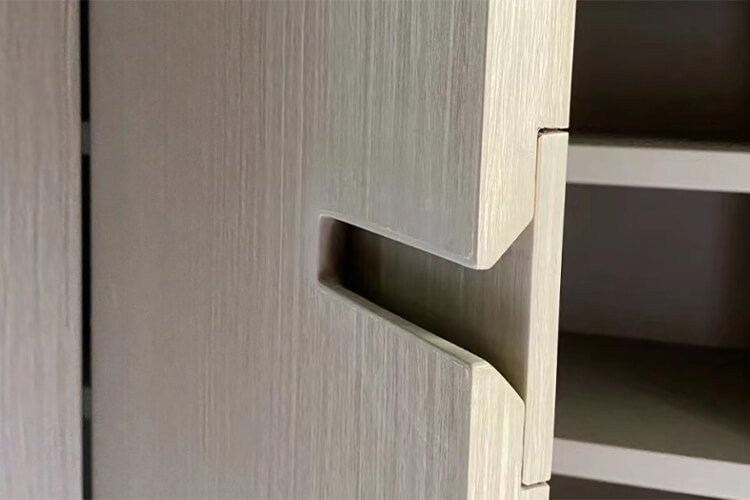
The aforementioned are some of the more aesthetically appealing groove handle designs for your reference. Please note that groove handles involve special craftsmanship and are relatively higher in price.
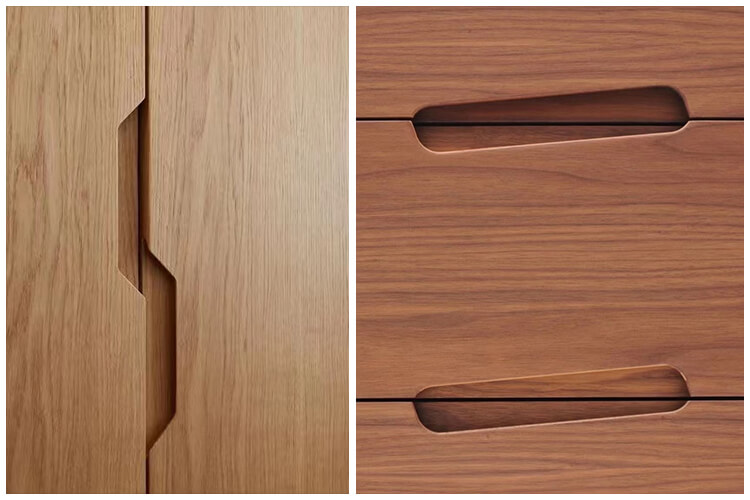
Embedded Handles
Embedded handles can be categorized into cabinet body embedded and cabinet door embedded. Cabinet body embedded are commonly used inside the cabinet.
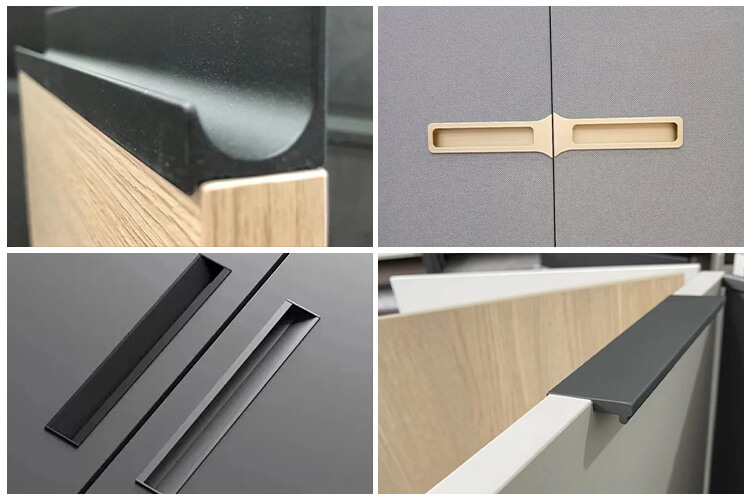
On the other hand, cabinet door embedded handles are well-suited for kitchen cabinets or environments with higher humidity levels. They come in various shapes such as U-shaped, L-shaped, J-shaped, G-shaped, V-shaped, and U-shaped with slanted edges. These handles not only serve as decorative elements but also enhance the overall texture of the cabinets.
Spring-Loaded Handles
Opting for spring-loaded handles is another option, although there is a relatively higher chance of requiring maintenance. The working principle of a spring-loaded handle involves a spring mechanism that propels the door open upon impact. This method is suitable for individuals who prefer or are unable to utilize the aforementioned handle designs.
